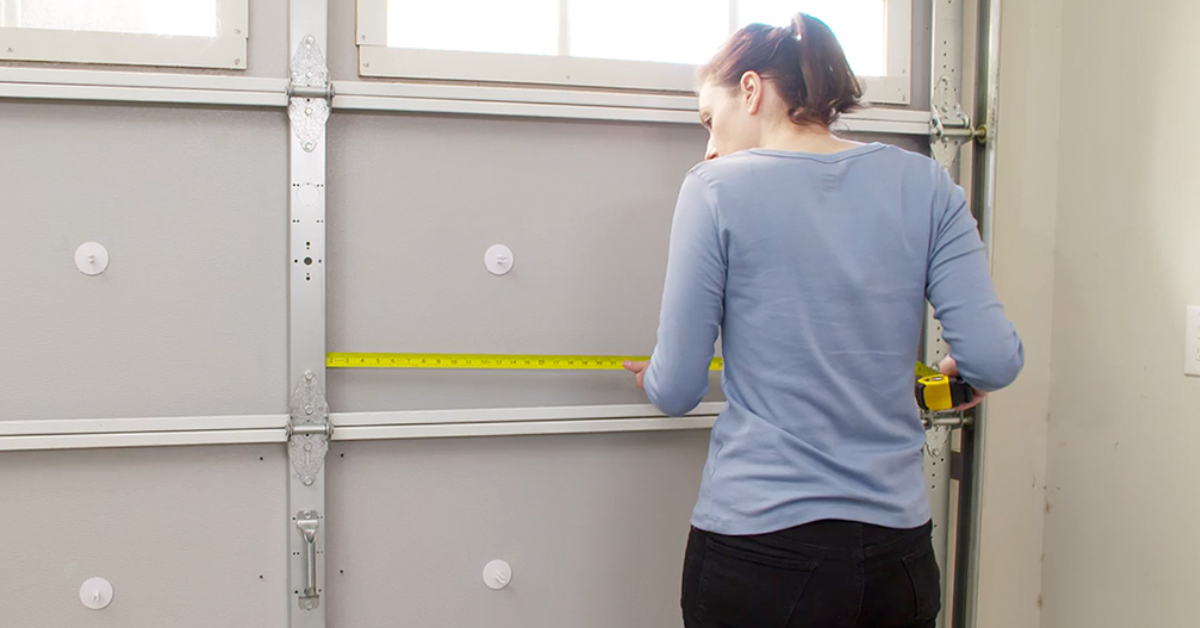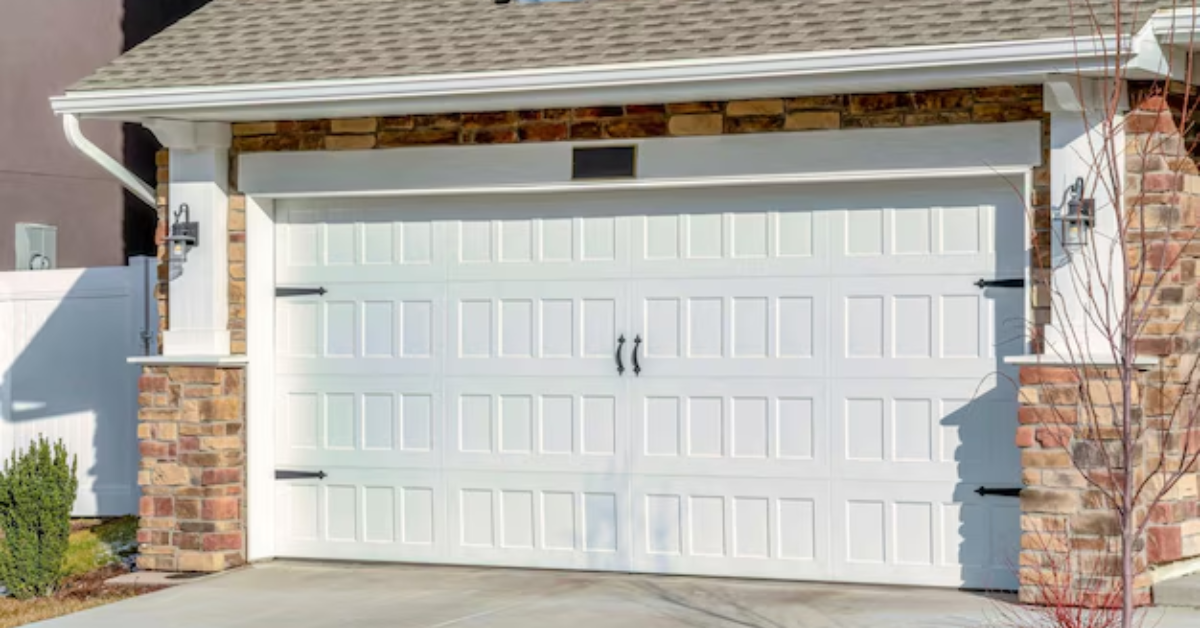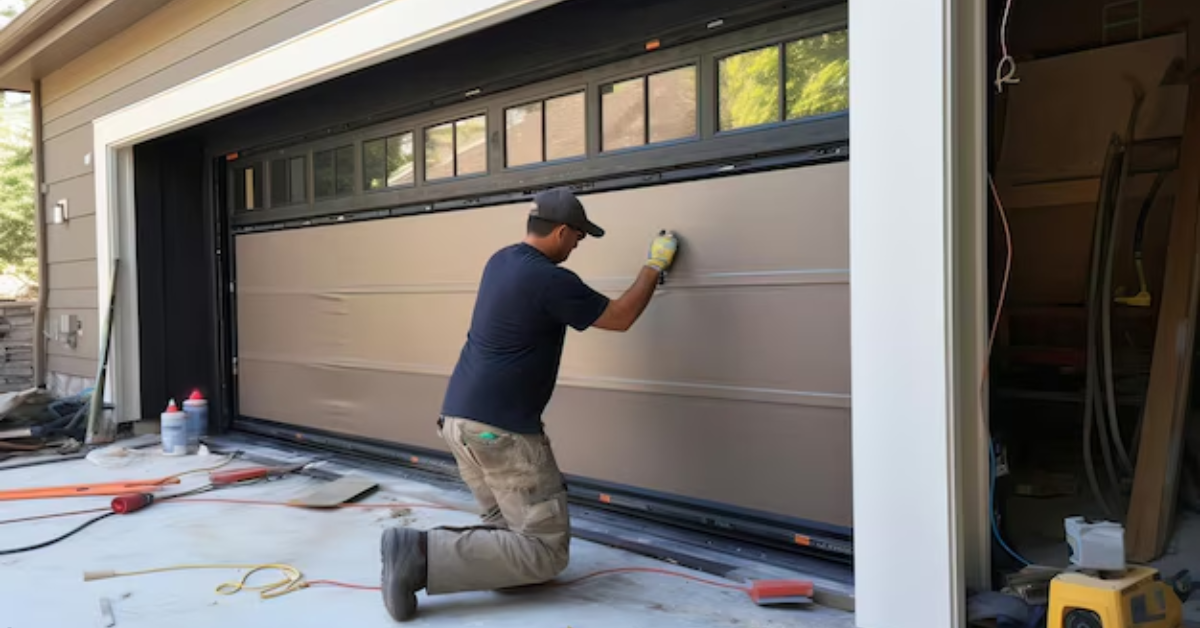What Is The Best Garage Door Insulation?
Garage door insulation may not be the first thing that comes to mind when you think about home improvement, but its significance cannot be overstated. Whether you use your garage primarily for parking your car, as a workshop, or even as an extra living space, proper insulation plays a crucial role in enhancing comfort, energy efficiency, and the overall functionality of your garage.
The importance of garage door insulation lies in its ability to regulate temperature within the garage space. During the scorching heat of summer or
the bitter cold of winter, a well-insulated garage door acts as a barrier, preventing unwanted heat transfer. This means that your garage remains cooler in the summer and warmer in the winter, creating a more comfortable environment for both you and your belongings.
Beyond temperature regulation, there are numerous benefits to investing in proper garage door insulation. One of the primary advantages is energy efficiency. By minimizing heat loss or gain through the garage door, you can significantly reduce your energy bills, especially if your garage is attached to your home. Proper insulation can also help protect your vehicles, tools, and other belongings from extreme temperatures, humidity, and even noise pollution.
What is Garage Door Insulation?
Garage door insulation is a material or combination of materials designed to reduce the transfer of heat or cold through the garage door, thereby improving energy efficiency and maintaining a more comfortable temperature inside the garage. It typically involves installing insulation panels or layers within the garage door structure to create a thermal barrier.
Insulation works by slowing down the transfer of heat between two spaces with different temperatures. In the case of a garage door, insulation materials such as fiberglass, foam board, reflective foil, or polystyrene are installed to create a barrier that prevents heat from escaping during the winter or entering during the summer.
This helps to maintain a more stable and comfortable temperature inside the garage, reducing the workload on heating and cooling systems and ultimately lowering energy costs.
Types of Garage Door Insulation
Fiberglass Insulation:
Fiberglass insulation consists of tiny glass fibers that are densely packed together. It is a popular choice for garage door insulation due to its affordability, lightweight nature, and relatively easy installation process. Fiberglass insulation comes in pre-cut panels or rolls that can be fitted into the cavities of the garage door. It provides decent thermal resistance and is resistant to moisture and mold.
Foam Board Insulation:
Foam board insulation, also known as rigid foam insulation, is made from polystyrene, polyurethane, or other foam materials. It comes in rigid panels that offer excellent thermal resistance and structural support. Foam board insulation is highly effective at reducing heat transfer and can be installed by cutting the panels to fit the dimensions of the garage door and securing them in place. It is resistant to moisture and provides good insulation value per inch of thickness.
Reflective Foil Insulation:
Reflective foil insulation consists of layers of reflective material, usually aluminum foil, sandwiched between layers of plastic or other materials. This type of insulation works by reflecting radiant heat away from the garage door, helping to maintain a cooler interior temperature. Reflective foil insulation is lightweight, easy to install, and highly effective in hot climates. It is particularly suitable for garage doors that are exposed to direct sunlight.
Polystyrene Insulation:
Polystyrene insulation, commonly known as styrofoam, is a lightweight and cost-effective option for garage door insulation. It is available in the form of rigid panels or foam boards that can be cut to size and attached to the garage door. Polystyrene insulation provides good thermal resistance and helps to minimize heat loss or gain. It is also resistant to moisture and insects, making it a durable choice for garage door insulation.
Each type of garage door insulation has its own advantages and limitations, so it's important to consider factors such as climate, budget, and installation requirements when choosing the best insulation option for your garage door. You can improve your garage's energy efficiency, comfort, and functionality by choosing the right insulation material and installing it properly.
Factors to Consider When Choosing Insulation
Climate Considerations:
- When selecting garage door insulation, it's crucial to consider the climate in which you live. If you reside in an area with extreme temperature fluctuations, you'll want insulation that provides superior thermal resistance to maintain a comfortable indoor temperature year-round. Reflective foil insulation works well in hot climates by reflecting radiant heat, while foam board or fiberglass insulation may be more suitable for colder climates.
R-Value:
- The R-value measures the insulation's resistance to heat flow. A higher R-value indicates better insulation performance. When choosing insulation for your garage door, consider the desired R-value based on your climate and insulation needs. Fiberglass and foam board insulation typically have higher R-values compared to reflective foil and polystyrene insulation.
Material Durability:
- Durability is another important factor to consider, especially if your garage door is exposed to harsh weather conditions or frequent use. Fiberglass insulation is known for its durability and resistance to moisture and mold, making it suitable for long-term use. Foam board insulation is also durable and can withstand impacts, while reflective foil and polystyrene insulation may require additional protective measures to prevent damage.
Installation Difficulty:
- Consider your DIY skills and the complexity of installation when choosing garage door insulation. Reflective foil insulation is relatively easy to install as it typically involves cutting and securing the material to the door surface. Fiberglass and foam board insulation may require more precise cutting and fitting but can still be installed by homeowners with basic DIY knowledge. Polystyrene insulation may be trickier to install due to its rigid nature and may require professional assistance for proper installation.
Cost-effectiveness:
- Evaluate the cost-effectiveness of each insulation type based on factors such as initial cost, energy savings, and longevity. While reflective foil insulation may have a lower upfront cost, it may not provide as much insulation value as fiberglass or foam board insulation. Consider the long-term energy savings and durability of the insulation material to determine its overall cost-effectiveness.
Installation Process
Deciding whether to tackle garage door insulation as a do-it-yourself project or hire a professional depends on various factors such as your skill level, available time, and complexity of the insulation material. While DIY installation can save money, it requires careful measurement, cutting, and fitting of insulation panels, which may be challenging for some homeowners. Professional installation ensures proper fitting and can save time and effort, especially for complex insulation materials or if you're unsure about the process.
Steps for Installing Insulation
- Gather Materials: Purchase the necessary insulation material, tools, and safety equipment.
- Prepare the Garage Door: Clean the surface of the garage door and remove any existing insulation or debris.
- Measure and Cut Insulation: Measure the dimensions of the garage door panels and cut the insulation material to fit using a utility knife or saw.
- Install Insulation: Place the insulation panels or layers onto the garage door, ensuring a snug fit. Use adhesive or fasteners to secure the insulation in place.
- Seal Gaps: Seal any gaps or seams with tape or caulk to prevent air leakage and improve insulation effectiveness.
- Test and Adjust: Close and open the garage door to ensure smooth operation and check for any gaps or areas that may require additional insulation.
- Repeat for Remaining Panels: Repeat the insulation installation process for each garage door panel until all panels are properly insulated.
Tips for Maintaining Garage Door Insulation:
- Regularly inspect the insulation for signs of wear, damage, or gaps.
- Clean the insulation surface with a mild detergent and water solution to remove dust and debris.
- Repair any damaged insulation or seals promptly to maintain insulation effectiveness.
- Ensure proper ventilation in the garage to prevent moisture buildup, which can damage insulation materials.
- Avoid placing heavy objects or exerting excessive pressure on the insulated garage door panels.
Lifespan of Different Insulation Materials:
The lifespan of garage door insulation materials varies depending on factors such as material quality, exposure to environmental elements, and maintenance practices. Generally, fiberglass and foam board insulation are durable and can last for many years with proper care and maintenance. Reflective foil insulation may degrade over time due to exposure to sunlight and moisture, while polystyrene insulation is susceptible to damage from impacts and may require replacement sooner.
Cost Analysis
The initial cost of garage door insulation includes the purchase price of insulation materials, tools, and any additional supplies needed for installation. The cost varies depending on the type and quality of insulation chosen, with reflective foil and polystyrene insulation typically being more affordable than fiberglass or foam board insulation. DIY installation may also save on labor costs compared to hiring a professional installer.
While the initial cost of insulation may vary, investing in high-quality insulation can lead to long-term savings through reduced energy bills and improved energy efficiency. Properly insulated garage doors help maintain a consistent indoor temperature, reducing the workload on heating and cooling systems. Also, durable insulation materials require less frequent replacement, further contributing to long-term savings over the lifespan of the garage door.
Conclusion
Garage door insulation is an essential investment for improving energy efficiency, maintaining comfort, and protecting your belongings in your garage. By understanding the key factors such as climate considerations, R-value, installation process, maintenance, and cost analysis, you can make an informed decision when selecting the best insulation for your garage door. Based on the factors discussed, fiberglass insulation emerges as a top recommendation for its high R-value, durability, and ease of installation. However, it's important to consider your specific needs and budget when choosing the most suitable insulation material for your garage door. Ultimately, investing in quality insulation will not only enhance the functionality of your garage but also lead to long-term savings and comfort for years to come.




